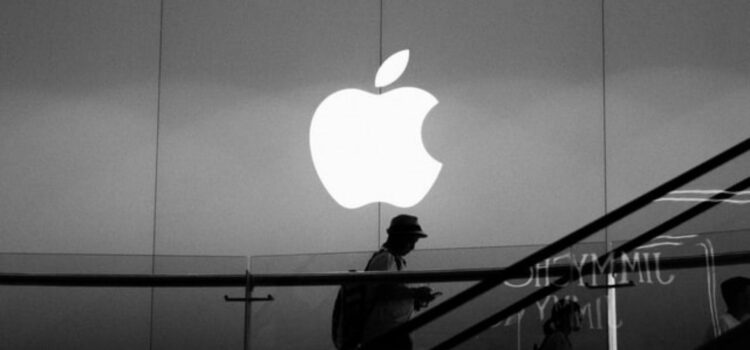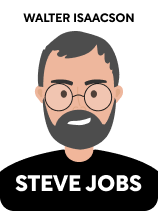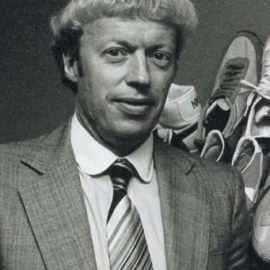

This article is an excerpt from the Shortform book guide to "Steve Jobs" by Walter Isaacson. Shortform has the world's best summaries and analyses of books you should be reading.
Like this article? Sign up for a free trial here.
What was Apple’s organizational culture like under Steve Jobs? How important was the culture at Apple?
While Steve Jobs was CEO of Apple, he led the company with a strict hand. But it also inspired collaborative teamwork that kept the company successful.
Read what Apple’s organizational culture was truly like with Jobs as CEO.
A Tyrannical Taskmaster
Jobs was driven by a singularity of vision when it came to anything he had a hand in designing. Once he knew what it was he wanted, whether it was a photo for an ad campaign, the layout for an Apple Store, or a particular shade of blue for a computer, he wouldn’t stop until he’d got it just right.
The intensity of Jobs’s creative vision, coupled with his lifelong desire for perfection, caused him to lead others with a very heavy hand, inadvertently creating many of the pitfalls that plagued his first tenure at Apple and at NeXT. Isaacson says that Jobs’s laser focus on minute details would often result in delays, cost increases, total redesigns, and overworked employees. Taken to extremes, his perfectionism led to ridiculous demands, such as that the NeXT computer be a perfect cube, regardless of its engineering needs.
Isaacson points out that Jobs’s need for control is what defined Apple’s stance in the debate between open and closed computer systems, which led to Microsoft’s greater market share. This same conflict resurfaced in the 2000s when Google released its open Android system to compete against the iPhone’s closed OS.
While Jobs’s vision often led him to act as a dictator, his colleagues learned that they could challenge him if they had better ideas than his. (In fact, the team that designed the Macintosh instituted an annual award for the employee who pushed back against Jobs the best.) Many of the people who worked with Jobs grew into tougher, more visionary people themselves.
(Shortform note: In Grit, psychologist Angela Duckworth argues that the most successful people embody traits of passion and perseverance, which she defines as resilience in the face of setbacks. While Jobs intentionally encouraged these traits in his employees, the mean-spirited way in which he did so wasn’t necessarily the best model to emulate.)
Despite Jobs’s often tyrannical behavior, he had a skill for fostering group collaboration. Many companies in the corporate world are fractured, split into divisions that compete against each other. Jobs would not let that happen, either at Pixar or at Apple. When Jobs designed a new building for Pixar, Isaacson says that he deliberately set it up so that teams working on different film projects weren’t segregated; they’d be forced to interact, even if by accident. At Apple, instead of having engineering, production, and marketing work on their facets of any project separate from each other, Jobs would insist that all divisions work in tandem, allowing for a cross-pollination of ideas and a healthy organizational culture at Apple.
(Shortform note: A divisional organizational structure does have its advantages, such as creating accountability and allowing for greater expansion. However, it comes with drawbacks as well, such as interdivisional rivalries and an inefficient duplication of resources.)
(Shortform note: The benefits of collaboration go beyond mere productivity. In Extreme Ownership, former Navy SEALs Jocko Willink and Leif Babin point out that collaboration encourages members of a team to prioritize the group’s success. In Creativity, Inc., Pixar founder Ed Catmull, who worked with Jobs, identifies collaboration as an essential part of innovation. To facilitate this at Pixar, Catmull instituted “Braintrust Meetings” in which team members from various projects would gather to give candid feedback to each other.)
The Cost of Jobs’s Need for Control
In the contest between open and closed systems, Jobs received pushback from more than just his competitors. In his essay “Why I Won’t Buy an iPad,” author Cory Doctorow criticizes Apple for infantilizing its users and acting as a technological gatekeeper.
In The Future of the Internet and How to Stop It, law professor Jonathan Zittrain warns against closed-system internet products, including those of Apple, but also Xboxes, TiVOs, and GPS systems that can’t be modified or fully controlled by their owners. These devices, he argues, represent a danger to the creative opportunities offered by an open internet.

———End of Preview———
Like what you just read? Read the rest of the world's best book summary and analysis of Walter Isaacson's "Steve Jobs" at Shortform.
Here's what you'll find in our full Steve Jobs summary:
- A no-fluff look into the life of Steve Jobs
- How Jobs changed the technology landscape
- What it was like to work with and for Steve Jobs






